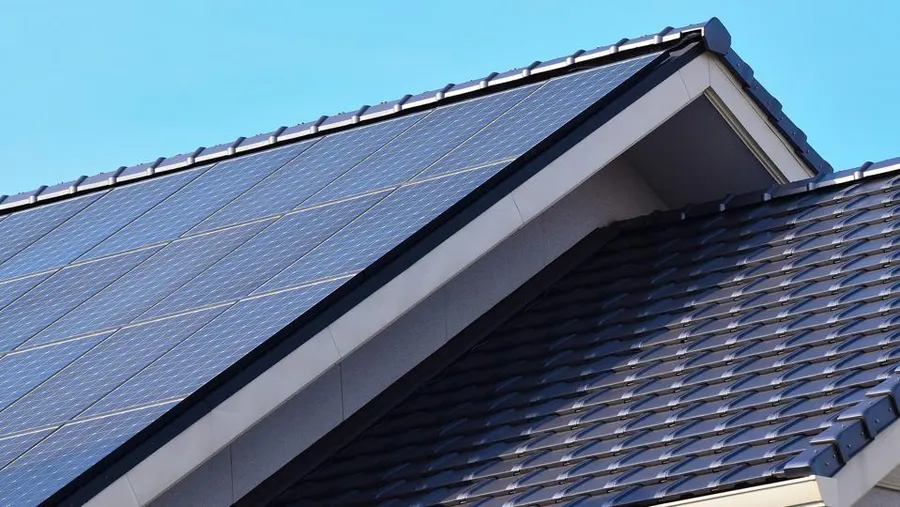Solar energy is no longer just a futuristic concept; it’s a present-day reality that’s transforming how we power our homes. One of the most exciting advancements in this field is the development of solar roof tile. Combining aesthetics with functionality, these innovative tiles are set to revolutionize the way we think about roofing and energy consumption. In this article, we’ll explore the many facets of solar roof tiles, from their design and benefits to installation and future potential.
What Are Solar Roof Tiles?
Solar roof tiles, also known as solar shingles, are designed to look like conventional roofing materials while generating electricity from sunlight. Unlike traditional solar panels that are mounted on top of the roof, solar tiles are integrated into the roof itself, offering a seamless and stylish appearance.
The Evolution of Roofing Materials
Historically, roofing materials have evolved from basic thatch to advanced composites. The introduction of solar roof tiles represents a significant leap forward. These tiles not only protect homes from the elements but also convert sunlight into clean, renewable energy.
How Solar Roof Tiles Work
Solar roof tiles contain photovoltaic cells, typically made from silicon. When sunlight hits these cells, it excites electrons, generating an electric current. This direct current (DC) is then converted to alternating current (AC) through an inverter, making it suitable for household use.
Aesthetic Appeal
One of the main advantages of solar roof tiles is their aesthetic appeal. Available in various styles and colors, these tiles can mimic traditional roofing materials such as slate, asphalt, or clay. This versatility allows homeowners to maintain their home’s architectural integrity while embracing green technology.
Environmental Benefits
By installing solar roof tiles, homeowners contribute to reducing carbon footprints and reliance on fossil fuels. Solar energy is a clean, renewable resource that helps decrease greenhouse gas emissions, making a significant impact on the fight against climate change.
Financial Advantages
Though the initial investment for solar roof tiles can be higher than that for traditional roofing or standard solar panels, the long-term financial benefits are substantial. Homeowners can enjoy significant reductions in energy bills and may qualify for various incentives, rebates, and tax credits. Over time, the savings on electricity can offset the upfront costs.
Durability and Longevity
Solar roof tiles are designed to be as durable as they are efficient. They can withstand harsh weather conditions, including heavy rain, wind, and hail. Many manufacturers offer warranties of 25 years or more, ensuring that these tiles provide reliable energy generation for decades.
Installation Process
The installation of solar roof tiles requires specialized skills and should be performed by professionals. The process involves removing the existing roof, installing a new underlayment, and then placing and connecting the solar tiles. Proper installation is crucial for maximizing the efficiency and lifespan of the tiles.
Maintenance Requirements
Solar roof tiles require minimal maintenance. Regular cleaning to remove dirt and debris is usually sufficient. Annual inspections by a professional can help ensure that the system operates efficiently and address any potential issues before they become significant problems.
Energy Efficiency
The energy output of solar roof tiles depends on factors such as geographic location, roof orientation, and local weather conditions. Generally, they can generate a substantial portion of a household’s energy needs. Pairing them with a battery storage system can enhance energy independence by storing excess power for use during nighttime or cloudy days.
Solar Roof Tiles vs. Traditional Solar Panels
While both solar roof tiles and traditional solar panels aim to harness solar energy, there are distinct differences. Solar tiles offer a more aesthetically pleasing option as they blend seamlessly with the roof. Traditional panels, however, are often more cost-effective and slightly more efficient. The choice between the two depends on individual priorities, budget, and energy requirements.
Real-World Applications
Around the world, homeowners are increasingly adopting solar roof tiles. In regions with abundant sunlight, like California and Australia, these tiles are becoming a popular choice due to their energy efficiency and aesthetic appeal. Many homeowners report significant reductions in their energy bills and an increase in property values, showcasing the practical benefits of this technology.
Common Myths and Misconceptions
Despite their growing popularity, several myths surround solar roof tiles. Some believe they don’t work in cloudy weather or that they might damage the roof. In reality, solar roof tiles are designed to perform well in various weather conditions and are installed to enhance the roof’s structure, not harm it. Addressing these misconceptions can help more people appreciate the benefits of solar roof tiles.
The Future of Solar Roof Tiles
The future of solar roof tiles looks promising. Technological advancements are making these tiles more efficient, affordable, and accessible. As the demand for renewable energy grows, solar roof tiles are poised to become a standard feature in homes, contributing to a sustainable energy future.
Conclusion
Solar roof tiles represent the perfect blend of style and sustainability. By harnessing the sun’s power, they offer an innovative solution that reduces electricity bills and environmental impact. As technology advances, solar roof tiles will continue to play a crucial role in the shift towards greener, more sustainable living. Embrace the future of roofing and energy with solar roof tiles—because it’s time to light up your life, literally.
